|
Prior to the late nineteenth and early twentieth century, yoga asanas (postures) were primarily seated positions. For the most part, they were not practiced for physical strength or health. In his book Yoga Body, Mark Singleton illuminates the influence of weightlifting and other physical cultures on what becomes yoga "asana". Today, an "asana" can mean nearly any physical position. Aside from some positions that come out of hathayoga, many others draw their roots from contortion, muscle control, wrestling, gymnastics or calisthenics. 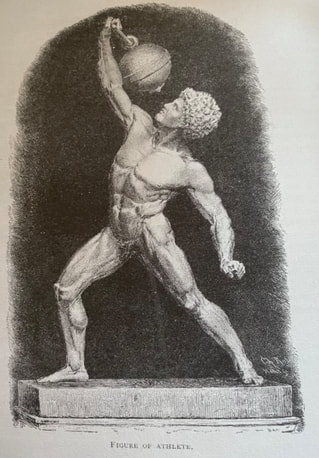 Source: "Sandow's System" (1894) Source: "Sandow's System" (1894) WARRIORS, TRIANGLES AND LUNGES Hathayoga texts do not contain postures like warriors, triangles or lunges. (This is not to say that no one ever stood in a lunging position, only to say that they were not part of yoga.) However, these positions feature in physical culture manuals like Sandow's System by Eugen Sandow from 1894. In Sandow's System, lunging positions are taught as "Heavy-Weight Exercises" and situate the legs in such a way to allow for an overhead press of a heavy weight. However, if we remove the weight, these same positions are what we today call "Warrior 1", "Reverse Warrior" or, as in the case above, "Triangle". INFLUENCE ON GHOSH The impact weightlifting had on Bishnu Ghosh and his students is well documented. Ghosh's first book is Muscle Control and Barbell Exercises and contains nothing called asana or yoga. Ghosh's early student Buddha Bose writes in his book Key to the Kingdom of Health Through Yoga (Vol. 1) about the influence of physical culture and even Sandow himself: "I have seen hundreds of physical cultists with mighty muscles, sportsmen of great proficiency, powerful wrestlers, champion swimmers and clever boxers with immense powers of endurance and have respected the determination and ability which produced their skill." (p. 6) He then writes about the "powerful physique as is possessed by men like Sandow" (p. 6). 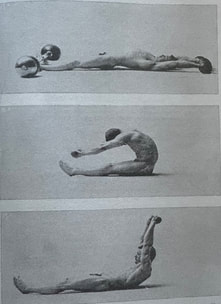 Source: "Sandow's System" (1894) Source: "Sandow's System" (1894) While Ghosh, Bose and many other teachers of yoga from the first half of the twentieth century go on to teach asana, the influence of weightlifting appears to continue. Even a position like the sit-up found in Bikram Yoga is extremely similar to the position shown with weights in Sandow's System. Sandow instructs that "it should at first be performed without the dumb-bells, then with dumb-bells of increasing weight" (p. 215). The sit-up, Sandow writes, "is designed to bring into play the rectus abdominis and other muscles of the abdomen, and has an important effect on the digestion" (p. 215). Over 100 years later, Choudhury writes in Bikram Yoga that "the sit-up strengthens and tones the abdomen, invigorates the body and increases the flexibility of the spine" (p. 164). CONCLUSION The influence of calisthenics or contortion on yoga asana is seamless. Neither of these practices incorporate apparatus or weights of any kind. Since asana is also a bodyweight practice, this is an easy transition. However, weightlifting uses equipment. When weightlifting positions mix with calisthenics or yoga asana, it is interesting to note what happens. Are we simply forgetting about the kettlebell every time we do a Warrior pose?? Sources:
Bose, Buddha. 1939. Key to the Kingdom of Health Through Yoga-Vol.1. Choudhury, Bikram. 2007. Bikram Yoga Ghosh, Bishnu. 1930. Muscle Control. Sandow, Eugen. 1894. Sandow's System. Singleton, Mark. 2010. Yoga Body.
3 Comments
6/6/2022 08:00:25 am
Our 200 hour yoga teacher training in Rishikesh is perfect for those who want to deepen their practice and become a certified yoga teacher. We offer hatha yoga teacher training, vinyasa yoga teacher training, and a 200 hour yoga teacher training course. All of our courses are led by experienced teachers who will help you develop your skills and knowledge.
Reply
200 hour yoga teacher training is available in India. The most popular programs are Hatha and Vinyasa yoga. These programs provide a comprehensive education in yoga, including the history and philosophy of yoga, asanas (yoga poses), pranayama (breathing techniques), and meditation. After completing a 200 hour program, students will be able to teach yoga classes with confidence and knowledge.
Reply
1/27/2023 12:53:00 am
This post explores the connection between weightlifting and yoga. The author draws on the teachings of B.K.S. Iyengar to explain how weightlifting can be used to improve alignment and build strength in yoga postures. The post is well-written and provides a unique perspective on the practice of yoga.
Reply
Leave a Reply. |
AUTHORSScott & Ida are Yoga Acharyas (Masters of Yoga). They are scholars as well as practitioners of yogic postures, breath control and meditation. They are the head teachers of Ghosh Yoga.
POPULAR- The 113 Postures of Ghosh Yoga
- Make the Hamstrings Strong, Not Long - Understanding Chair Posture - Lock the Knee History - It Doesn't Matter If Your Head Is On Your Knee - Bow Pose (Dhanurasana) - 5 Reasons To Backbend - Origins of Standing Bow - The Traditional Yoga In Bikram's Class - What About the Women?! - Through Bishnu's Eyes - Why Teaching Is Not a Personal Practice Categories
All
Archives
May 2024
|

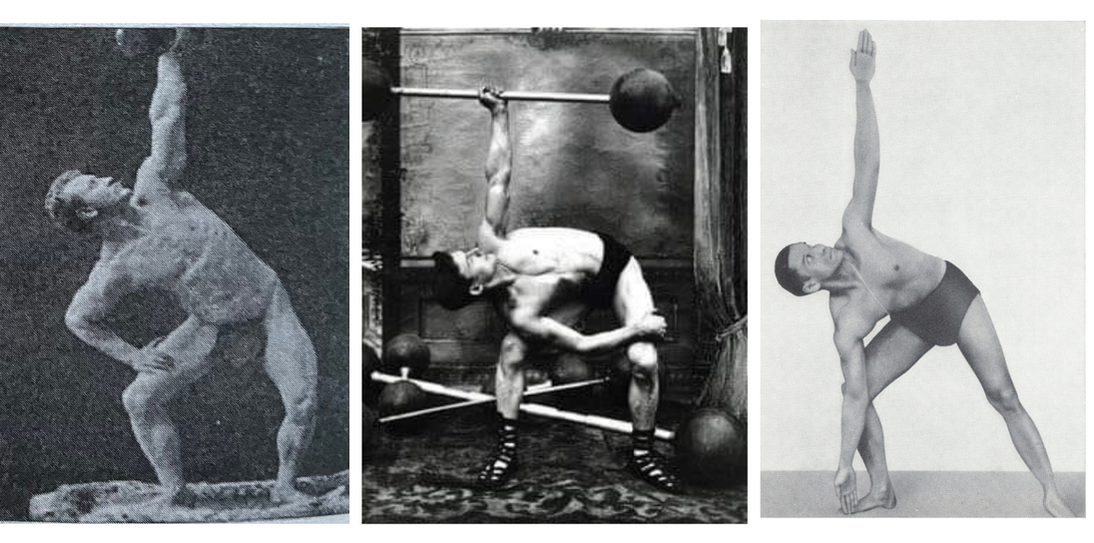
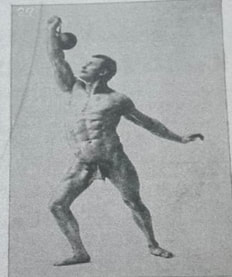
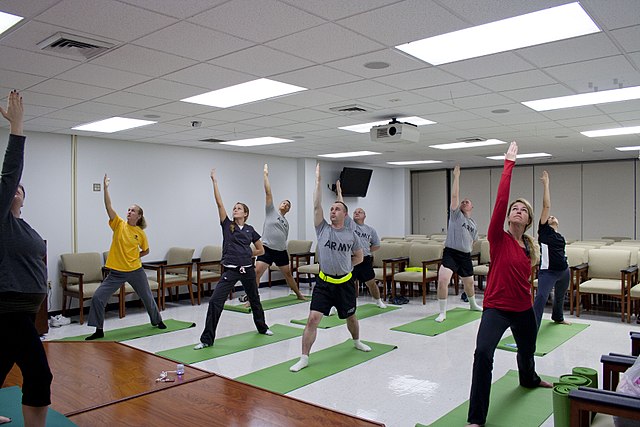





 RSS Feed
RSS Feed